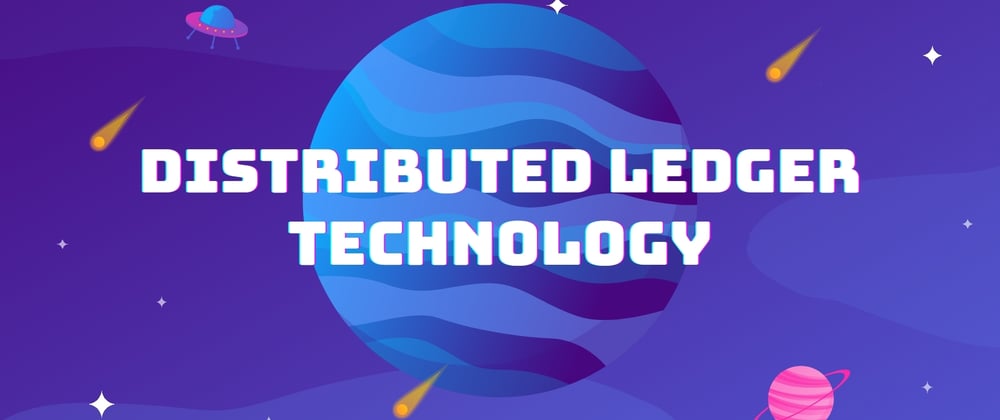Definition
A distributed ledger is essentially an asset database that can be shared across
a network of multiple sites, geographies or institutions. All participants within
a network can have their own identical copy of the ledger. Any changes to the
ledger are reflected in all copies in minutes, or in some cases, seconds. The
assets can be financial, legal, physical or electronic. The security and accuracy
of the assets stored in the ledger are maintained cryptographically through the use of ‘keys’ and signatures to control who can do what within the shared ledger.
Entries can also be updated by one, some or all of the participants, according to
rules agreed by the network.
DLT comes on the heels of several peer-to-peer (P2P) technologies enabled by the
internet, such as email, sharing music or other media files, and internet telephony.
However, internet-based transfers of asset ownership have long been elusive, as
this requires ensuring that an asset is only transferred by its true owner and ensuring
that the asset cannot be transferred more than once, i.e. no double-spend. The asset in question could be anything of value.
Application of DLT
- Cryptocurrency and Bitcoin
Underlying this technology is the ‘block chain’, which was invented to create
the peer-to-peer digital cash Bitcoin in 2008. Block chain algorithms enable
Bitcoin transactions to be aggregated in ‘blocks’ and these are added to a
‘chain’ of existing blocks using a cryptographic signature. The Bitcoin ledger is
constructed in a distributed and ‘permissionless’ fashion, so that anyone can
add a block of transactions if they can solve a new cryptographic puzzle to add
each new block. The incentive for doing this is that there is currently a reward
in the form of twenty five Bitcoins awarded to the solver of the puzzle for each
‘block’. Anyone with access to the internet and the computing power to solve
the cryptographic puzzles can add to the ledger and they are known as ‘Bitcoin
miners’. The mining analogy is apt because the process of mining Bitcoin is
energy intensive as it requires very large computing power. It has been estimated
that the energy requirements to run Bitcoin are in excess of 1GW and may be
comparable to the electricity usage of Ireland.
Bitcoin is an online equivalent of cash
Government taxation and revenue policies
Distributed ledger technologies have the potential to help governments to
collect taxes, deliver benefits, issue passports, record land registries, assure the
supply chain of goods and generally ensure the integrity of government records
and services. In the NHS, the technology offers the potential to improve health
care by improving and authenticating the delivery of services and by sharing
records securely according to exact rules. For the consumer of all of these
services, the technology offers the potential, according to the circumstances, for
individual consumers to control access to personal records and to know who has
accessed them.money & Payments
• Payment authorization, clearance & settlement
• International remittances and cross-border payments (alternative to correspondent banking)
• Foreign exchange
• MicropaymentsHealthcare
Electronic medical recordsGovernance • E-voting systems
• E-Residence
• Government record-keeping, e.g. criminal records
• Reducing fraud and error in government payments
• Reducing tax fraud
• Protection of critical infrastructure against cyberattacks
Merits of DLTS
Decentralization and disintermediation. DLT enables direct transfers of digital
value or tokens between two counterparties and decentralized record-keeping,
removing the need for an intermediary or central authority who controls the ledger.
This can translate into lower costs, better scalability and faster time to market.Greater transparency and easier auditability.
All network members have a
full copy of the distributed ledger (which can be encrypted). Changes can only be made when consensus is established and they are propagated across the entire network in real-time. This feature, combined with the lack of a central authority or limited involvement of a central authority, has the potential to reduce fraud and eliminate reconciliation costs.Automation & programmability. DLT enables programming pre-agreed
conditions that are automatically executed once certain conditions hold. This is
referred to as “smart contracts” (see section 8), for example invoices that pay
themselves when a shipment arrives or share certificates which automatically
send owners dividends or cash-for-work programs that pay beneficiaries out
once the contracted work is completed. Smart contracts can be done in traditional
centralized ledger systems as well, but the design of centralized ledger systems
requires such actions to be implemented only after the concerned parties have
agreed to the underlying transaction as recorded in the central system, which in
some contexts can take upwards of a day. In contrast, in a DLT, the counterparties
by definition agree the moment the transaction is completed, as both have the
same record of the transaction. Also, the result of the execution of the “smart contract” itself will take additional time to propagate and be reconciled in a traditional ledger system.Immutability & verifiability.
DLT can provide an immutable and verifiable
audit trail of transactions of any digital or physical asset. While in most cases,
immutability is desirable, it can create problems related to recourse mechanisms if the system fails. Immutability of the ledger, however, does not mean that a countervailing transaction to annul a disputed transaction cannot be created. This is in line with how dispute
resolution works, for example in payment card systems. The original record would, however, in this case still remain. Two MIT researchers have recently filed a patent for a cryptographic solution
that would allow an administrator to ‘unlock’ units
in a blockchain and edit them, though this is highly
controversial as immutability is seen as one of the core advantages of the first blockchains.Gains in speed and efficiency.
DLT offers
the potential of increasing speed and lowering
inefficiencies by removing or reducing frictions in
transactions or in clearing and settlement processes
by removing intermediaries and automating
processes.
-Cost reductions.
DLT offers the potential for
significant cost reductions due to removing the
need for reconciliation as DLT-based systems by
definition contain the “shared truth” and hence there
is no need to reconcile one version of “truth” with
that of one’s counterparties. Additional sources of
cost reduction could be lower infrastructure costs for
maintaining a DL, as well as reductions in frictions
and fraud. According to some estimates, distributed
ledger technology could save the financial industry
alone around $15-20 billion per year.
- Enhanced cybersecurity resilience. DLT has the potential to provide a more resilient system than traditional centralized databases and offer better protection against different types of cyber attacks because of its distributed nature, which removes the single point of attack.
Challenges associated with DLT
-
Privacy: In permissionless ledgers, such as Bitcoin
and Ethereum, all transactions are open and visible
to all network members, though they can be
encrypted and the identity of the user is hidden. In
certain contexts, the identity of the participant can
be inferred based on transaction patterns or other
markers. Permissioned DLs encounter the same
issue. This is one of the key concerns of applying
DLT to financial market infrastructures and it is one
of the issues which CORDA and Fabric propose to
address in their design.- Environmental costs. Using proof-of-work as a consensus mechanism creates a large electricity footprint as vast amounts of computing processing power are used up for “mining”. (This concern mainly applies to permissionless blockchains that use proof-of-work protocols.)
- Bleeding Edge/Lack of Maturity. DLT remains at an early stage of development and there are still serious concerns about the robustness and resilience of DLT especially for large volume transactions, availability of standardized hardware and software applications, and also ample supply of skilled professionals. However, large traditional IT players like IBM and Microsoft, as well as financial sector players like Visa and MasterCard have started developing DLT products and services, which could eventually provide the same level of trust and confidence as traditional IT systems offer today.
- Scalability and Transaction Speed. Current iterations of permissionless distributed ledgers face issues related to scalability of blockchains, both in terms of transaction volume and speed of verifications. Existing permissionless blockchains have limited transaction speed. Bitcoin, for example, can only process between 4-7 transactions per second due to the limitation of the block size at one megabyte, a subject of controversy in the bitcoin community. (Block size could be increased but bigger blocks would take longer to propagate through the network, worsening the risks of forking.) This problem, however, could be resolved over time and is most pronounced in the Bitcoin system. Other permissionless DLT systems like Ethereum report higher transaction throughputs. In addition, permissioned blockchains have greater capacity and can process higher transaction volumes but these lack global scale and come at the expense of a more centralized, less transparent platform, which removes many of the benefits from the distributed, open nature of public DLT systems.
- Interoperability and Integration. Different DLT systems will need to be interoperable with other ledgers and integrated with existing systems if they are to be introduced at scale into the financial system. In addition, the cost of integrating DLT into financial infrastructures like payment and settlement systems will require industry wide co- ordination and collaboration and require significant expenses. There are efforts underway to develop DL frameworks specifically for the financial sector, notably the CORDA framework by R3 CEV and Fabric by Hyperledger project. These two frameworks are an effort to address specific requirements raised by industry practitioners in areas such as: • allowing transactions between counterparties in a peer-to-peer manner; need for validating identity of counterparties; • limiting visibility of transactions on a need-to- know basis; need for regulators to have access to transactions; • ensuring equivalence between smart contracts and actual legal prose; • using existing industry standard software tools; • interfaces between multiple distributed ledgers; and • supporting a variety of consensus models, including one approach of just having the transacting counterparties participate in the consensus. These frameworks, in essence, explore using DL approaches within prevailing business and regulatory practices. CORDA is specifically focused on the financial sector whereas Hyperledger seeks to provide a broader framework with initial applications proposed for the financial sector and for supply chain management.







Top comments (0)